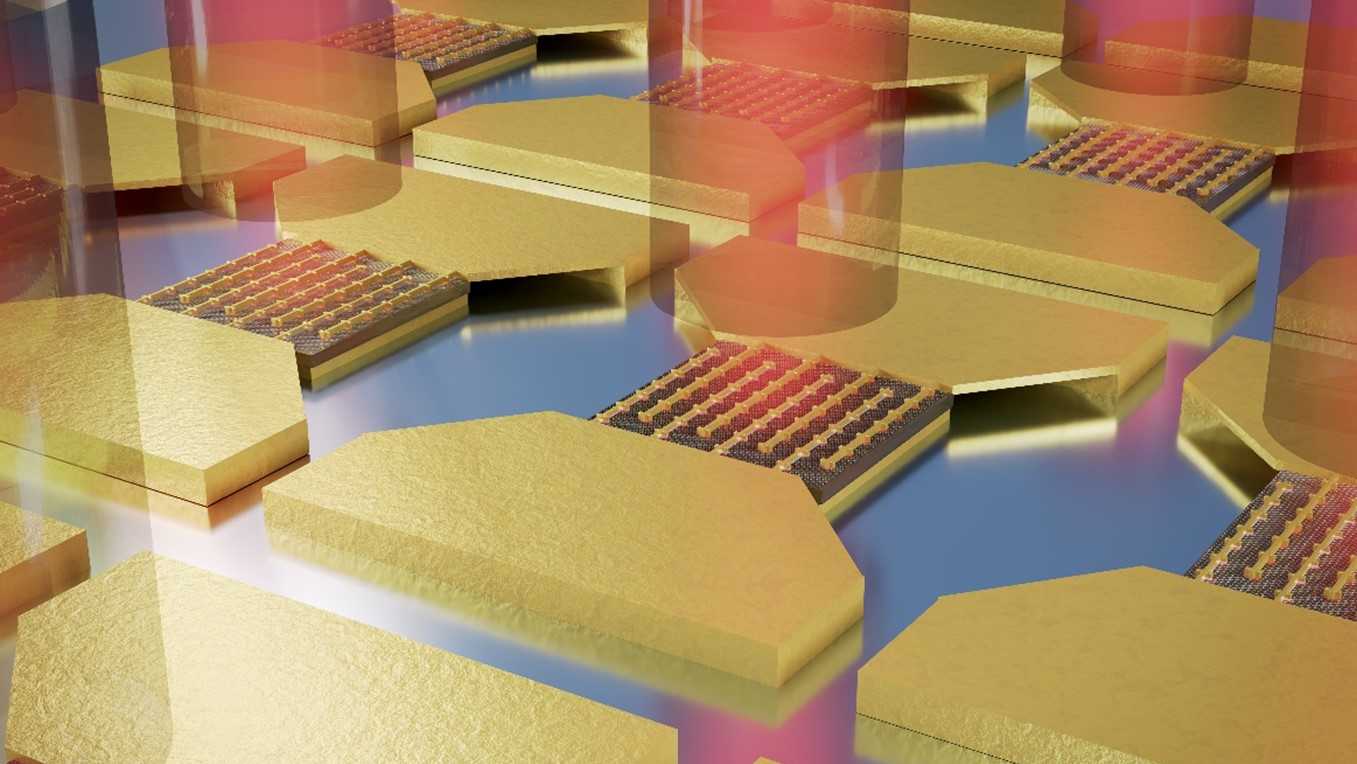Graphene photodetector shows unprecedented speed
Optical data communication requires an ever-growing need for faster devices. Scientists of the Institute of Electromagnetic Fields (IEF) have developed the world’s fastest photodetector up to this point. The combination of metamaterials and graphene has led to the record breaking >500 GHz bandwidth. These devices could pave the way for the next generation highest speed photodetectors.

Detection of light is essential for many applications. While visible light detection is commonly used, e.g., in cameras, the detection of infrared light is not as obvious. Nevertheless, many systems in everyday life rely on exactly this detection. One of the most prominent examples is the distribution of the internet by means of optical fibers carrying infrared light. With the ever-increasing demand for higher data rates, infrared photodetectors need to keep up with the speed.
Graphene as high speed infrared photodetector material
Graphene is a promising material candidate for the next generation of high-speed infrared photodetectors. The two-dimensional carbon material was predicted early on to enable extremely fast responses (a Nobel prize was awarded for its discovery). Scientists at ETH Zurich have now demonstrated a functional photodetector with an unprecedented frequency bandwidth of >500 GHz – beating the previous record demonstrations by a factor four.
Overcoming the low absorption
However, graphene with its two-dimensional nature also comes with downsides. The low volume limits the light-matter interaction and graphene is therefore not an efficient absorber. “We have counteracted the low absorption by co-integrating the graphene in a metamaterial structure,” explains Stefan Köpfli, the articles lead author and a PhD student under the supervision of Professor Juerg Leuthold at D-ITET.
Not only does the metamaterial provide enhanced light matter interaction, but it was engineered to optimize the response for highest speed. By changing the metamaterial dimensions the group could further show that the detector could be tuned for operation at other infrared wavelengths.
Towards the ideal photodetector
While the high-speed and the possibility to tune the device for a large infrared spectral range are highly sought after properties in a photodetector, the detector offers more advantages. Graphene is a low cost material and potentially integratable with current CMOS fabrication technologies. Beyond, it can be fabricated on any substrate as graphene can be put down on a multitude of surfaces. All of which makes the detector an ideal fit for a cost-effective fabrication. Further, the detector is compact. Unlike many other high-speed detectors, it can be directly illuminated and does not need extra footprint for access waveguides. Lastly, the power consumption is low as the device can be operated passively.
While many properties already reach their target, the sensitivity of the device is still lagging behind. “At the moment, a higher responsivity would be highly desirable,” says Stefan Köpfli. “The graphene material quality is still holding us back, but we have also identified several additional routes to increase the detector’s performance”. The future goal is to show a densely integrated array of these devices with even better performance characteristics.